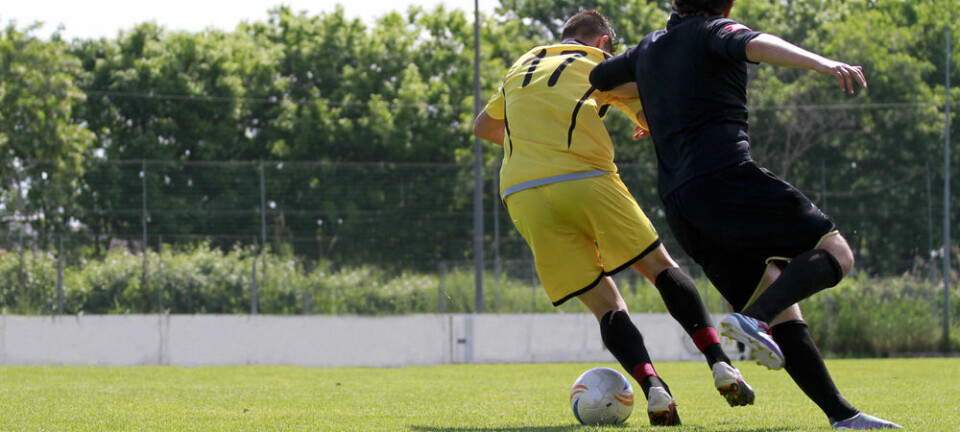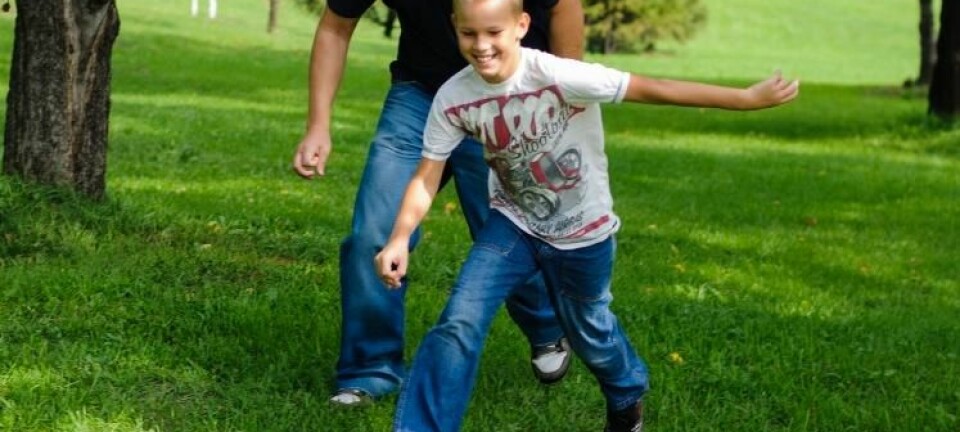An article from Norwegian SciTech News at NTNU
Young talented footballers overtrain
Talented junior football players train so much that they may decrease their chances of making it into the adult leagues.
Denne artikkelen er over ti år gammel og kan inneholde utdatert informasjon.
Many young boys and girls dream of becoming pro footballers one day. In Norway, they can choose a sports program track in secondary school to increase their chances—while also playing on multiple high-level teams for their clubs, towns and regions.
The overall activity load can become so great that it prevents players from developing their talent, and they experience burnout before they reach senior level.
“Training that is intended to give young players an advantage, hinders them instead. The development of our future footballers is at stake,” says Stig Arve Sæther, Assistant Professor in NTNU’s Sports Sciences Programme.
Consistently high activity levels
Sæther and his colleague Nils Petter Aspvik recently published the results of their research on talent development in football. Their study focused on the physical activity load of junior footballers who played for a premier league team in Norway, viewed in light of the difficult transition from junior to senior level.
Thirteen young players were outfitted with an accelerometer that objectively measured their daily physical activity over three one-week periods in March, June and October. This information gave the researchers a picture of the players’ activity levels and especially of the match and training loads before, during and at the end of the season.
Players also answered a questionnaire on the intensity and variation of their training load throughout the season.
High match load for young players
Results show no significant differences in daily physical activity between the three measured weeks, but they do indicate very high activity levels and match loads among young elite players.
“You often hear that to get good, you have to train a lot. These players train so much that they increase their risk of injury from overuse and they’re in danger of being overtrained. It’s also hard to stay motivated without adequate recovery time,” says Aspvik, a Sports Sciences PhD candidate at NTNU.
Researching multiple teams
In March, the players’ mean daily physical activity measured 901.2 counts per minute, reflecting the number and intensity of movements detected by the accelerometer. By comparison, the rate for typical 17-year-olds is 542 counts per minute. Sixty per cent of the players responded that the match and training loads were high during the season, while 40 per cent felt these varied throughout the season.
That top young football players are more active than their other age peers is to be expected, but the researchers have little data with which to compare their study so far, since few such studies among football players exist. Sæther and Aspvik are currently studying the activity load in another junior premier league team, as well as a junior first division team, which is the second highest level in Norwegian men’s football.
“We certainly consider these players’ activity levels very high, even though we don’t yet know if this particular club is special. We do know that the players train a lot,” says Aspvik.
Training oversight needed
Sæther and Aspvik believe that talented football players are experiencing growing pressures. The players feel they have to train a lot to be good, so they play both at school and in their free time. They practice hard and often compete on several different teams, making it difficult to monitor the players’ total training time.
“The amount of training at top levels increases in some sports, but football is the opposite, so this training oversight is essential at the senior level,” says Sæther.
“The junior players experience pressure from all directions in their hectic everyday lives. A clear picture of these athletes’ overall activity load is key to understanding their situation. If we don’t have this ability to monitor and adjust their training load, the effects on players’ development can be devastating,” he said.


































